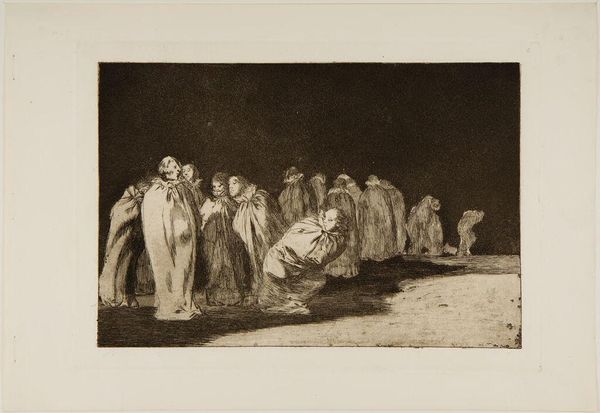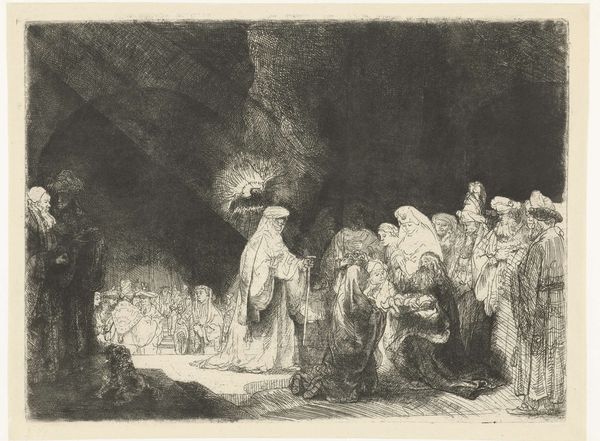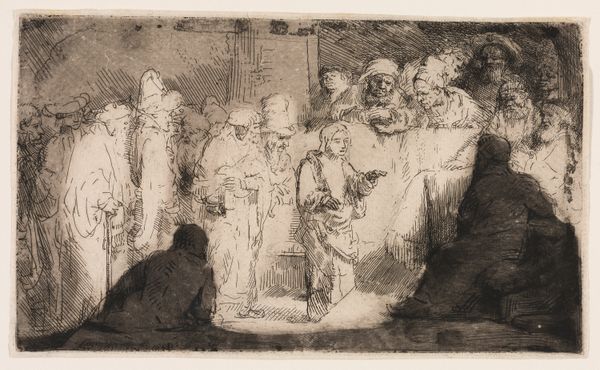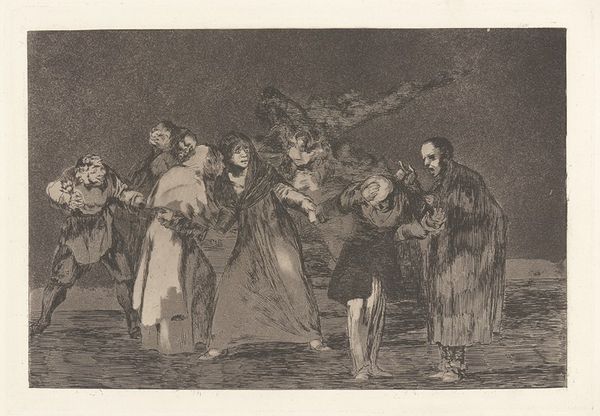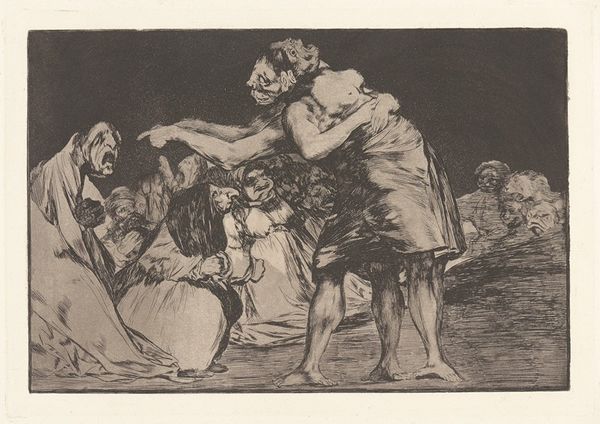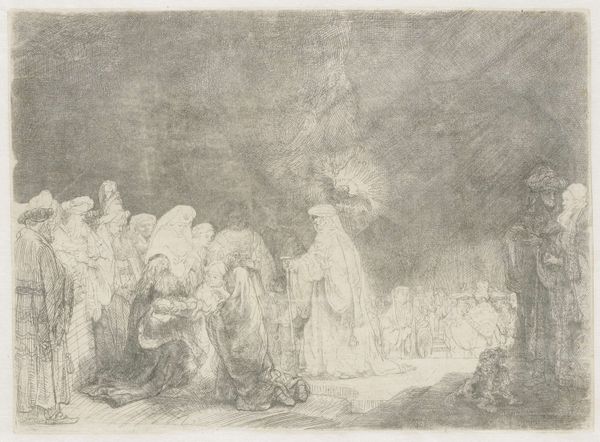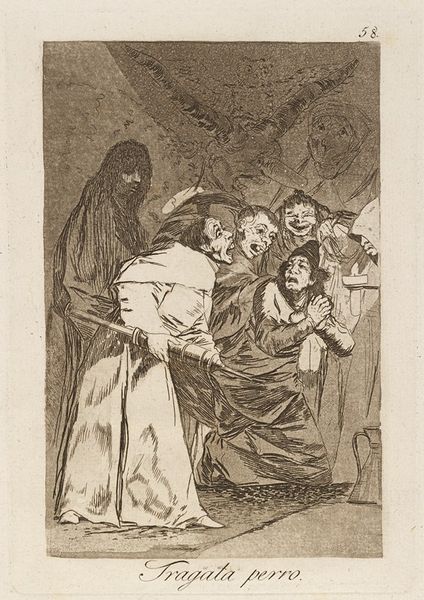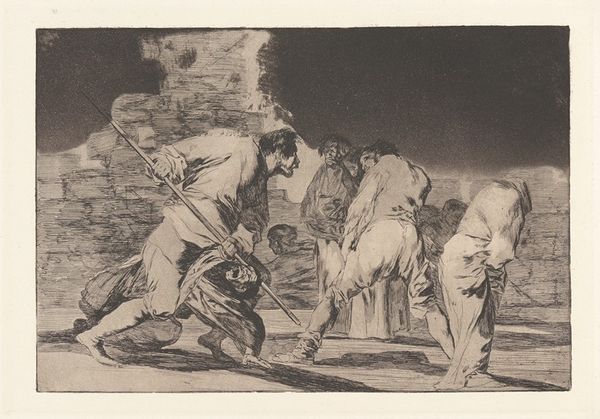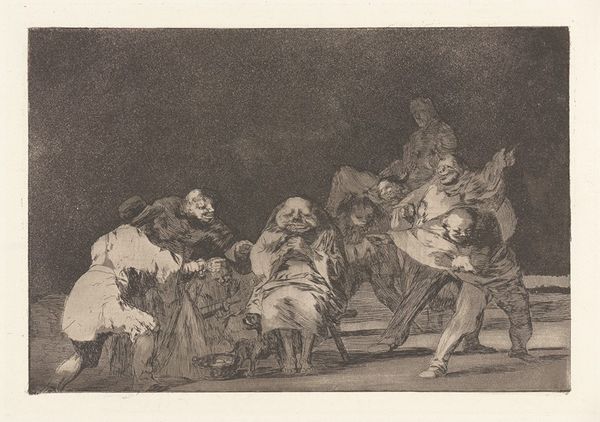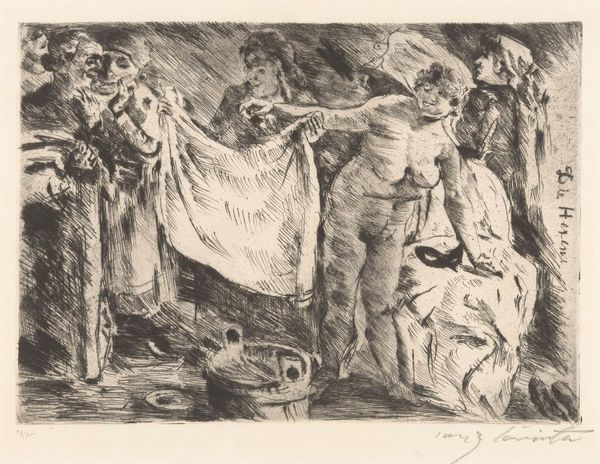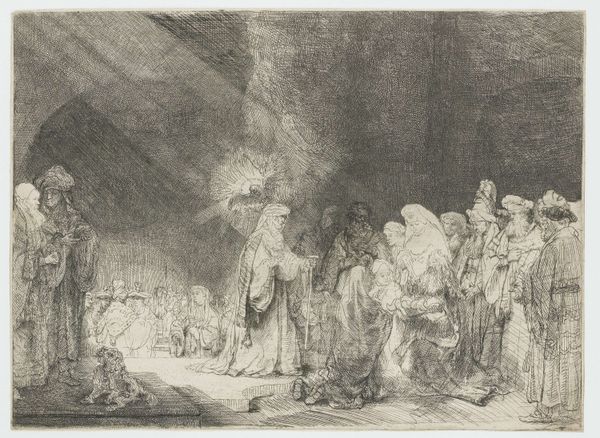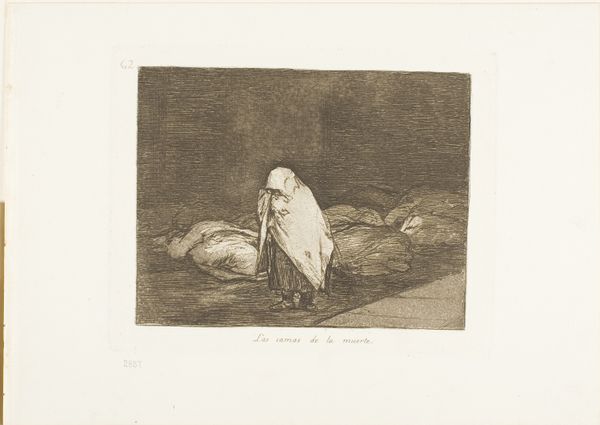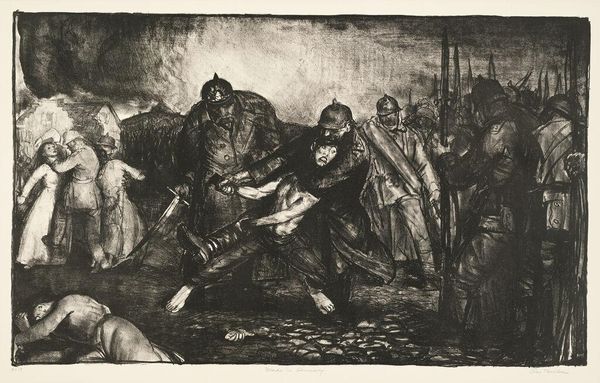![There Is Something beneath the Sackcloth, i.e. You Can’t Judge a Man by His Clothes [The Men in Sacks] by Francisco de Goya](/_next/image?url=https%3A%2F%2Fd2w8kbdekdi1gv.cloudfront.net%2FeyJidWNrZXQiOiAiYXJ0ZXJhLWltYWdlcy1idWNrZXQiLCAia2V5IjogImFydHdvcmtzLzBmMzM1NjEyLThiNTEtNGQ1ZC1iMDhkLTdhMTc0MTEzYTY0NC8wZjMzNTYxMi04YjUxLTRkNWQtYjA4ZC03YTE3NDExM2E2NDRfZnVsbC5qcGciLCAiZWRpdHMiOiB7InJlc2l6ZSI6IHsid2lkdGgiOiAxOTIwLCAiaGVpZ2h0IjogMTkyMCwgImZpdCI6ICJpbnNpZGUifX19&w=1920&q=75)
There Is Something beneath the Sackcloth, i.e. You Can’t Judge a Man by His Clothes [The Men in Sacks] c. 1813 - 1820
0:00
0:00
Copyright: Public Domain: Artvee
Curator: Here we have Francisco Goya’s etching, dating from approximately 1813 to 1820. It's entitled "There Is Something beneath the Sackcloth, i.e. You Can’t Judge a Man by His Clothes [The Men in Sacks]." Editor: It has a strangely haunting feel to it, almost dreamlike, but a very dark dream. The figures seem shrouded, diminished… ominous. Curator: Indeed. The work belongs to Goya’s “Disparates,” a series exploring themes of folly, irrationality, and the dark side of human nature after the Spanish War of Independence. Sackcloth was imposed on those found guilty of treason and blasphemy. Editor: So the clothing acts as a symbol, a public marker of shame and social exclusion, revealing the politics of imagery in that era. One wonders about the narratives, about power, about what transgressions or alleged crimes might warrant such dehumanization. Curator: Precisely. Note the composition: the figures are compressed, huddled together, but also separated by an unspoken tension. It reflects Goya’s broader commentary on the oppressive social and political climate of post-war Spain and beyond, and raises questions about our contemporary world, about those persecuted and marginalized. Editor: It’s interesting to see how Goya employs the technique of etching, the way the lines define the folds of the cloth. This gives volume and a presence to figures we cannot really "see." The shadows almost become characters in themselves, reinforcing the idea of something hidden, unspoken, but still very much felt. Curator: And despite the title's suggestion that appearance is deceiving, the image, as you suggest, Editor, provokes a powerful emotional response simply through the figures’ visual presence, how they fill a social space with what appears to be forced anonymity. Editor: It challenges the viewer to consider the forces that shape collective identity, both then and now. I appreciate how Goya's "sacks" expose the complex intersection of power, clothing, identity, and dehumanization across temporal, historical, and theoretical contexts.
Comments
No comments
Be the first to comment and join the conversation on the ultimate creative platform.
